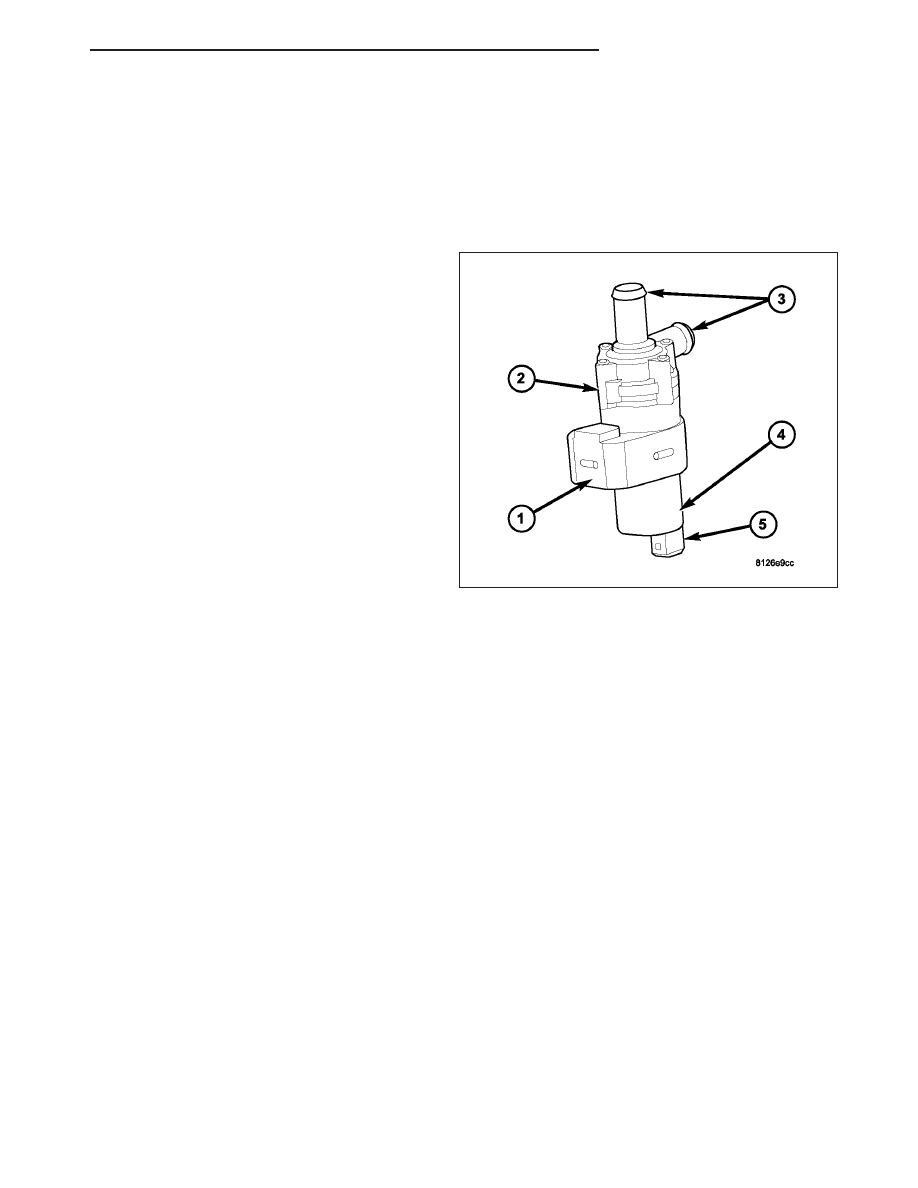Content .. 1571 1572 1573 1574 ..
Dodge Durango (HB). Manual - part 1573

22. Charge the refrigerant system (Refer to 24 - HEATING & AIR CONDITIONING/PLUMBING - FRONT - STAN-
DARD PROCEDURE - REFRIGERANT SYSTEM CHARGE).
PUMP-WATER-AUXILIARY
DESCRIPTION
An electric auxiliary water pump is used on all models
to aid in circulating the engine coolant through the
front and rear heater core (depending on application).
The auxiliary water pump is mounted to the right front
frame rail by a rubber isolator (1) and consists of a
molded plastic housing (2) with two heater hose con-
nections (3), a 12 volt direct current (DC) motor and
impeller assembly (4) with an integral wire connector
receptacle (5).
OPERATION
The A/C-heater control operates the auxiliary water pump when all of the following conditions have been met.
•
Vehicle speed below 48 km/h (30 mph)
•
Coolant temperature between 10° C (50° F) and 110° C (230° F)
•
Front blower motor turned On
•
Rear temperature heat setting above the halfway setting (60% heat)
•
No fault conditions detected
The A/C-heater control turns the auxiliary water pump Off when any of the following conditions occur.
•
Vehicle speed above 48 km/h (30 mph)
•
Coolant temperature above 110° C (230° F)
•
Front blower motor turned Off
The auxiliary water pump cannot be adjusted or repaired and, if faulty or damaged, it must be replaced.
The auxiliary water pump is diagnosed using a scan tool. Refer to 24 - HVAC Electrical Diagnostics for more
information.
REMOVAL
CAUTION:
DO NOT apply excessive pressure on the auxiliary water pump tubes when removing the heater hoses.
Excessive pressure may damage the tubes, causing an engine coolant leak.
HB
PLUMBING - REAR
24 - 485